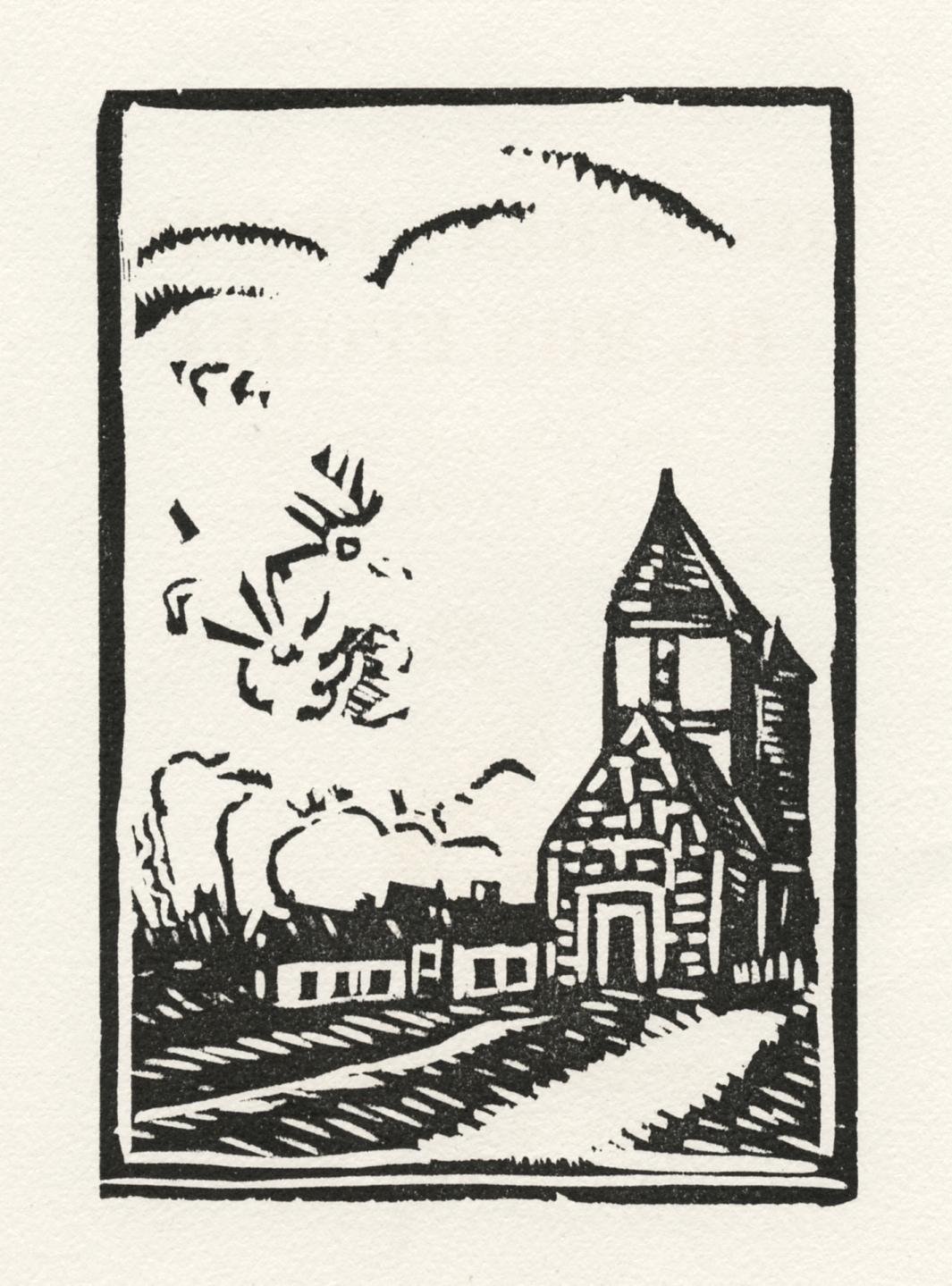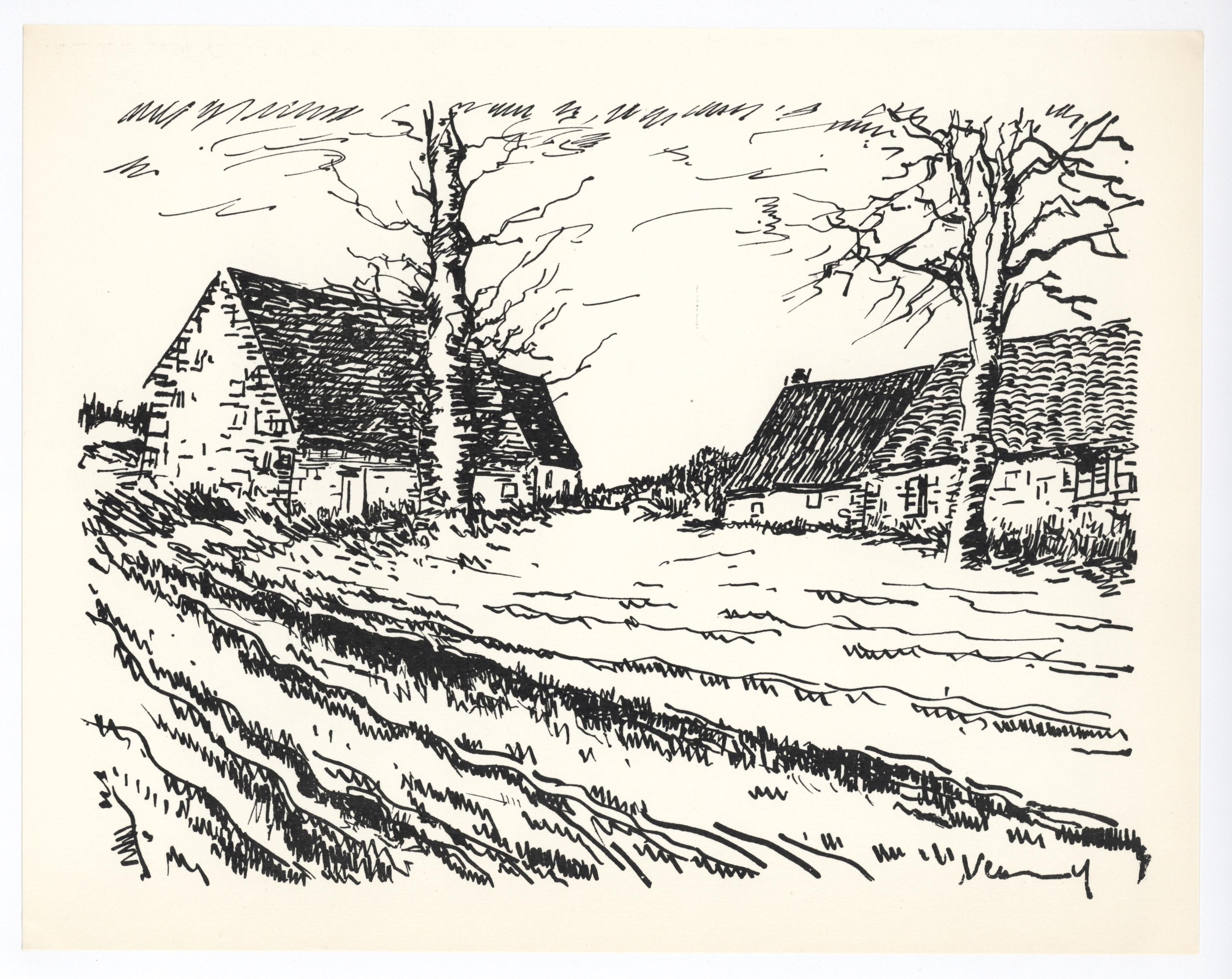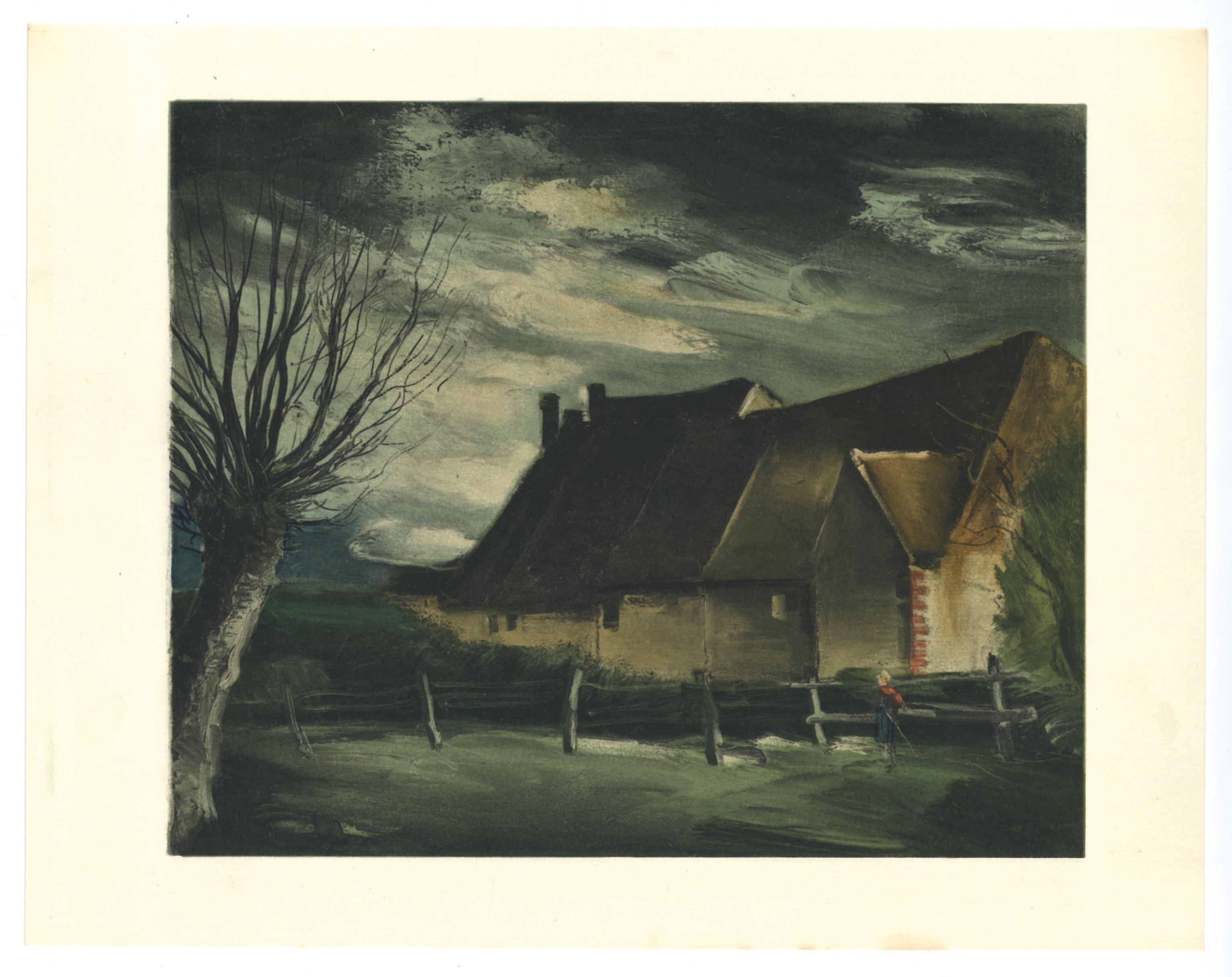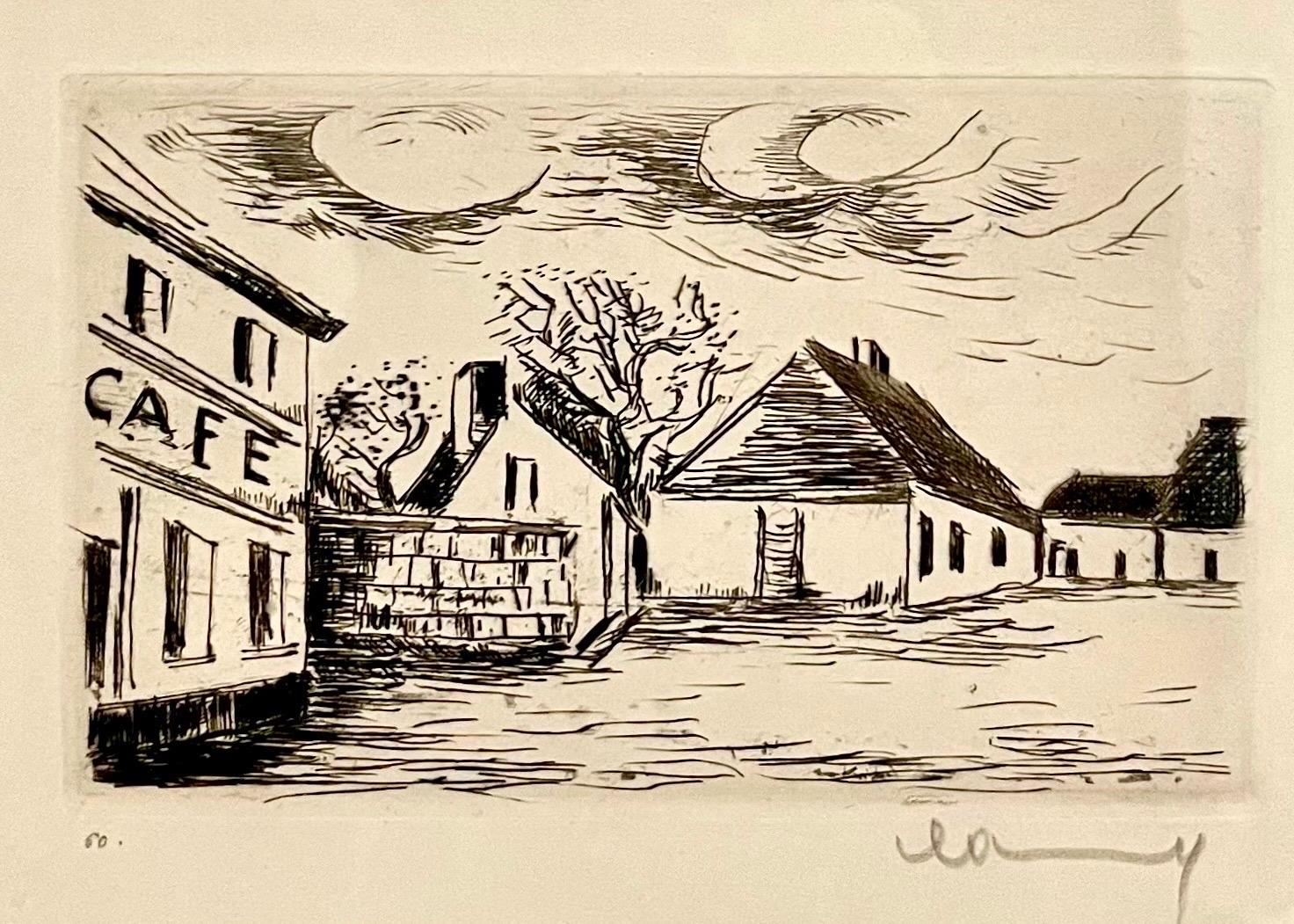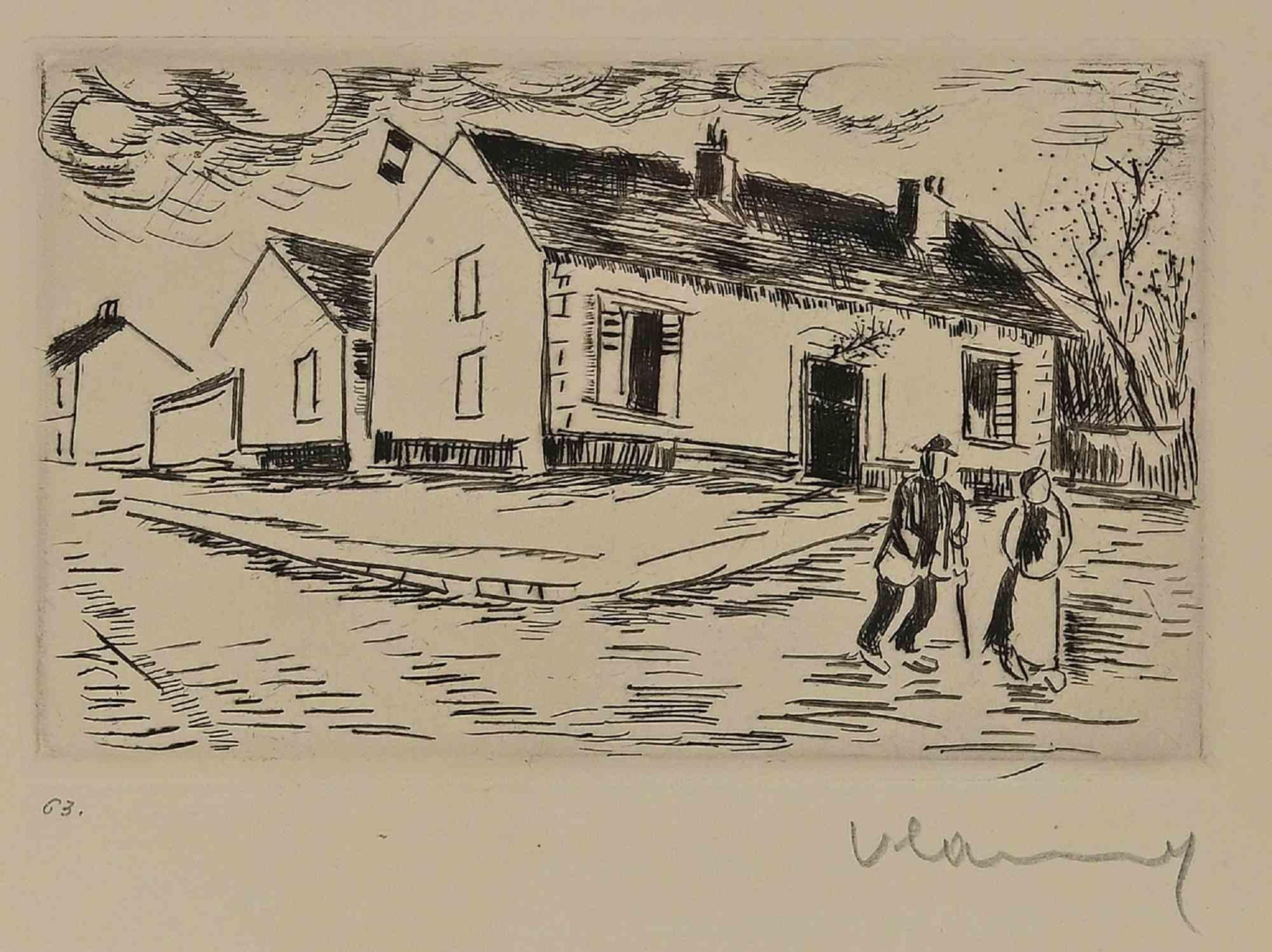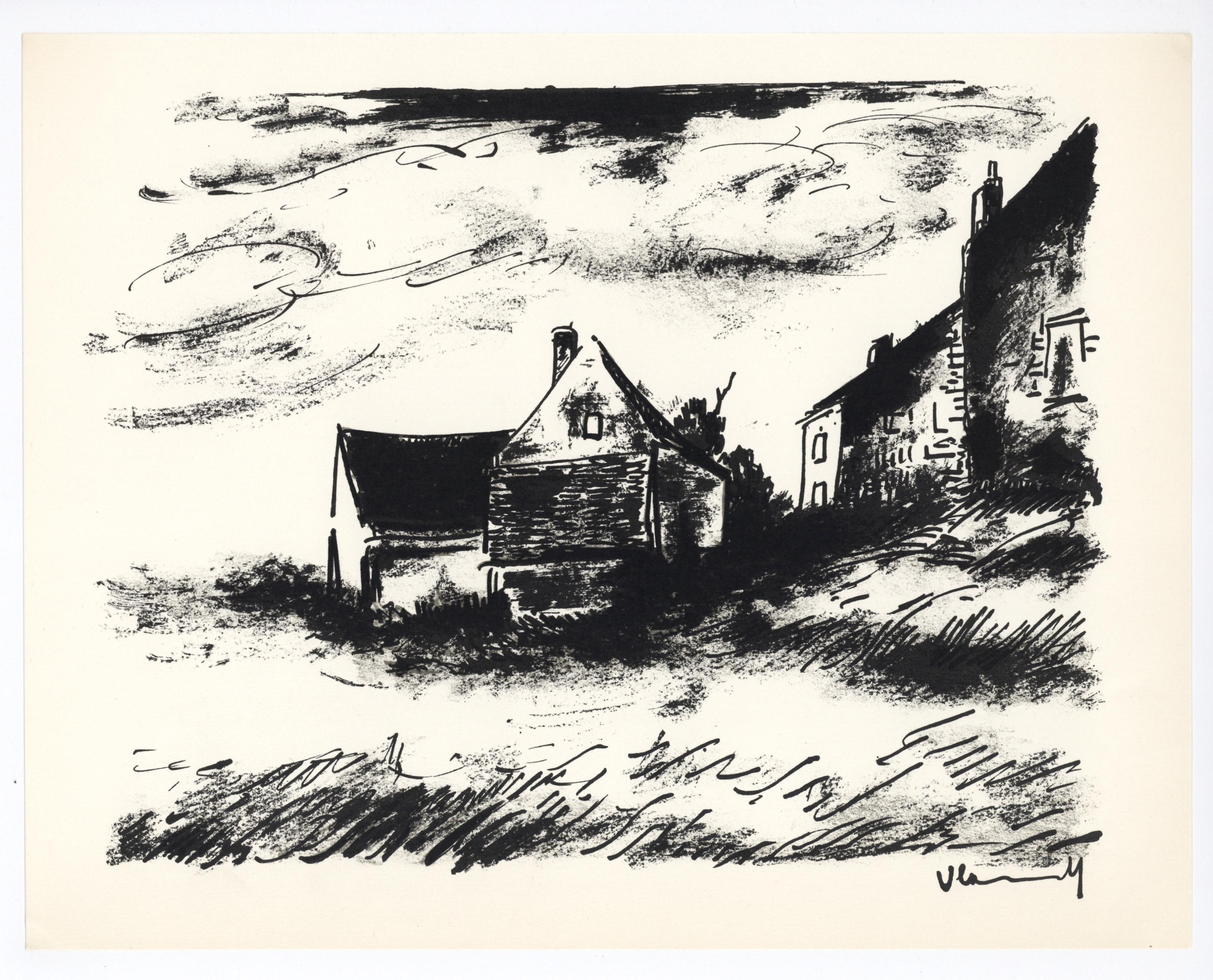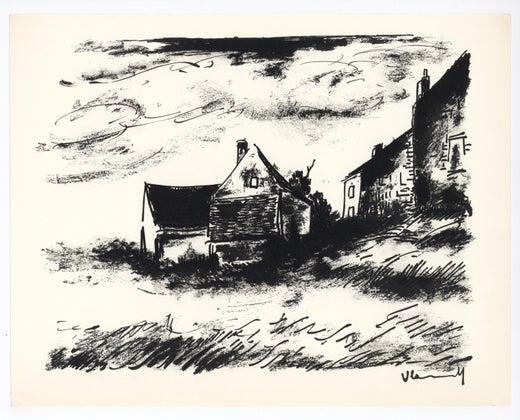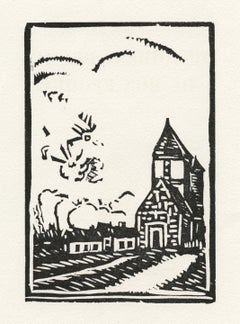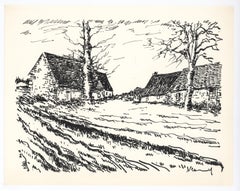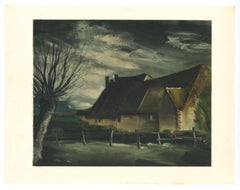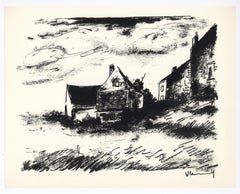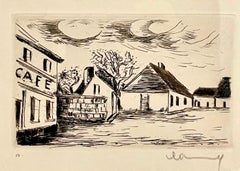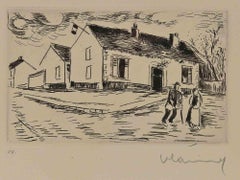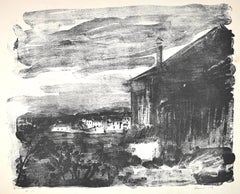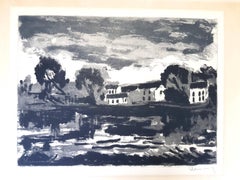Items Similar to original lithograph
Want more images or videos?
Request additional images or videos from the seller
1 of 2
Maurice de Vlaminckoriginal lithograph1921
1921
$175
£133.80
€153.16
CA$246.77
A$268.64
CHF 143.41
MX$3,243.08
NOK 1,803.15
SEK 1,675.91
DKK 1,143.88
About the Item
Medium: original lithograph. Printed in Paris in 1921 on Lafuma-Navarre wove paper, and issued in a limited edition of 300 for Georges Duhamel's "Trois journees de la tribu". Size: the total sheet measures 9 1/4 x 7 inches (235 x 178 mm). Not signed.
Condition: there is some foxing in the margins.
- Creator:Maurice de Vlaminck (1876-1958, French)
- Creation Year:1921
- Dimensions:Height: 9.26 in (23.5 cm)Width: 7.09 in (18 cm)
- Medium:
- Period:
- Condition:Condition: there is some foxing in the margins.
- Gallery Location:Henderson, NV
- Reference Number:1stDibs: LU2365216387962
Maurice de Vlaminck
Maurice de Vlaminck was a French painter, best known as one of the spearheads of the Fauvism movement at the start of the 20th century. His reputation rests predominantly on his landscapes, though he also produced still lifes and portraits. Born in Paris in 1876, Vlaminck had relatively little artistic training and, as a young man, dreamt of becoming a professional cyclist. A chance encounter in 1900, however, when he was nearing the end of his national service in the army, proved fateful. It was with the budding artist, André Derain, whom he met when a train they were aboard derailed. The pair lived in the small town of Chatou, a few miles along the River Seine from Paris, and they chose to complete their homeward journey from the French capital that day on foot. They struck up a friendship, and before long were sharing a studio. Derain and Vlaminck would become, alongside Henri Matisse, the driving forces behind Fauvism, the first avant-garde art movement of the 20th century. Partly inspired by the recent innovations of Paul Gauguin and Vincent van Gogh, it was characterised by aggressive brushwork, simplified forms and intense non-naturalistic colours. Its name came from the reaction of a critic in 1905 who compared the artists to fauves (‘wild beasts’). Vlaminck enjoyed painting in primary colours, and is particularly associated with scenes set in and around Chatou. Standout examples include Restaurant de la Machine à Bougival (1905) (today found in the Musée d'Orsay) and The Seine at Chatou (1906) (found in the Metropolitan Museum of Art in New York). The poet Guillaume Apollinaire hailed Vlaminck as ‘the wildest of the Fauves’. In the years immediately before the outbreak of World War I, the artist’s style shifted. His palette grew slightly more sombre, and there was a greater emphasis on solidity and a landscape's underlying structure. This revealed the influence of Paul Cezanne — the subject of a ground-breaking, posthumous retrospective in Paris in 1907. Vlaminck worked in a munitions factory during the war. His paintings after it were much darker and more realistic than those with which he had made his name. He died in 1958, aged 82.
About the Seller
5.0
Platinum Seller
Premium sellers with a 4.7+ rating and 24-hour response times
Established in 2006
1stDibs seller since 2023
584 sales on 1stDibs
Typical response time: 1 hour
- ShippingRetrieving quote...Shipping from: Henderson, NV
- Return Policy
More From This Seller
View Alloriginal woodcut
By Maurice de Vlaminck
Located in Henderson, NV
Medium: original woodcut. Printed in Paris in 1927 on Arches paper, and issued in a limited edition of 750 for the artist's own "Histoires & Poemes de mon epoque". Image size: 5 1/4 ...
Category
1920s Prints and Multiples
Materials
Woodcut
"Les Challonges" original lithograph
By Maurice de Vlaminck
Located in Henderson, NV
Medium: original lithograph. Printed in Paris in 1958 at the Mourlot atelier, and published by Andre Sauret in an edition of 2000. Size: 9 1/2 x 12 1/4 inches (242 x 310 mm). Signed ...
Category
1950s Landscape Prints
Materials
Lithograph
"Haute-Folie" lithograph
By (after) Maurice de Vlaminck
Located in Henderson, NV
Medium: lithograph. This lithograph (after the Vlaminck painting) was printed in Paris in 1958 at the Mourlot atelier, and published in an edition of 2000. The image size is 7 3/4 x ...
Category
1950s Prints and Multiples
Materials
Lithograph
"Potiniere at Rueil" original lithograph
By Maurice de Vlaminck
Located in Henderson, NV
Medium: original lithograph. Printed in Paris in 1958 at the Mourlot atelier, and published by Andre Sauret in an edition of 2000. Size: 9 1/2 x 12 1/4 inches (242 x 310 mm). Signed ...
Category
1950s Landscape Prints
Materials
Lithograph
"The Road" original lithograph
By Maurice de Vlaminck
Located in Henderson, NV
Medium: original lithograph. Printed in Paris in 1958 by Mourlot and published in an edition of 2000. Size: 12 1/4 x 19 inches (310 x 475 mm). There is a center fold, as published. S...
Category
1950s Prints and Multiples
Materials
Lithograph
"The Longny Road" lithograph
By (after) Maurice de Vlaminck
Located in Henderson, NV
Medium: lithograph. This lithograph (after the Vlaminck painting) was printed in Paris in 1958 by the Mourlot atelier, and published by Andre Sauret in an edition of 2000. The image ...
Category
1950s Prints and Multiples
Materials
Lithograph
You May Also Like
Hand Signed in Pencil Etching Cafe de Paris Visage de Maisons Maurice Vlaminck
By Maurice Vlaminck
Located in Surfside, FL
Maurice Vlaminck
Le Cafe de Paris, Pl. X, from Visage des Maisons, c. 1927 (Walterskirchen 132)
Etching on Van Gelder laid paper, signed in pencil, trial proof with the blindstamp o...
Category
1920s Modern Landscape Prints
Materials
Etching
Village - Etching by M. de Vlaminck - 1950
By Maurice de Vlaminck
Located in Roma, IT
Village is a modern artwork realized by Maurice de Vlaminck in 1950.
Black and white etching.
Hand signed and dated on the lower margin.
Edition of 100 specimen as reported on th...
Category
1950s Post-Impressionist Landscape Prints
Materials
Etching
Environs de Triel - Lithograph by Maurice de Vlaminck - 1920s
By Maurice de Vlaminck
Located in Roma, IT
Fine print on vélin fort “Arches”, numbered and signed in pencil by the artist.
Small stain on right margin of the sheet. Light oxidation on bottom right angle.
Full margins.
Ref...
Category
1920s Modern Landscape Prints
Materials
Lithograph
Maurice de Vlaminck - Original Handsigned Etching
By Maurice de Vlaminck
Located in Collonge Bellerive, Geneve, CH
Maurice de Vlaminck - Original Handsigned Etching
Title: L'Oise à Cergy
Reference: Catalogue raisonné Walterskirchen, n°110.
Original etching, hand-signed in pencil by the artist ; ...
Category
1920s Modern Landscape Prints
Materials
Etching
Maurice de Vlaminck, The Challonges, from Vlaminck, 1958
By Maurice de Vlaminck
Located in Southampton, NY
This exquisite lithograph by Maurice de Vlaminck (1876–1958), titled Les Challonges (The Challonges), from the album Vlaminck, originates from the 1958 edition published by Andre Sau...
Category
1950s Fauvist Landscape Prints
Materials
Lithograph
$716 Sale Price
20% Off
Free Shipping
Bougival
By Maurice de Vlaminck
Located in Fairlawn, OH
Bougival
Woodcut, 1914
Signed and numbered in pencil
Edition 30, this numberd 22
Printed on laid Van Gelder Zonen paper
Published by Henri Kanweiler, Paris
Printed by Paul Birault, P...
Category
1910s Fauvist Landscape Prints
Materials
Woodcut
More Ways To Browse
Bartolozzi Print
Bernard Buffet 1967
Bonnefoit Alain
Cannes Poster
Celebrity Pop Art
Citrus Print
Damien Hirst The Currency
Donald Duck Art
Donald Sultan Orange
Ed Don Hardy
Egon Schiele Original
Fishing Lithograph Art
Francesco Clemente Lithograph
Francois Houtin
French Alps Poster
Giovanni Folo
Goya Los Caprichos
Greek Etching
